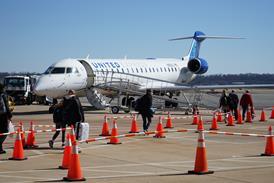Believing a design defect aboard the Bell-Boeing V-22 is likely to blame for a second in-flight engine fire, the US Navy has placed a flight restriction on the US domestic Osprey fleet and ordered the contractor to rush deliveries of a modification kit.
The flaw, however, will eventually require a permanent design fix, which will heap additional cost on the V-22 programme.
Investigators of a 6 November MV-22 mishap in
“There was enough initial indication that this incident may have been caused by EAPS,” says a US Naval Air Systems Command (NAVAIR) spokesman.
The preliminary finding means the domestic V-22 fleet will not be allowed to operate with the EAPS installed, he adds. BellBoeing must deliver and install an EAPS modification kit before each aircraft can be cleared for normal flight status.
The restriction does not affect the 10 US Marine Corps MV-22s deployed to
Without the EAPS on board, the domestic fleet’s stock of engines will suffer greater wear than normal while operating under the flight restriction.
The EAPS is a blower that keeps out dust, sand and other potentially damaging particles. But a defect in the blower sometimes causes it to jam. The sudden stop sends a jolt through the number-three hydraulics line that powers the blower. Eventually, the jolts weaken the hydraulics tube and cause it to leak.
The super-heated fluid is channeled out of the nacelle, but its course runs directly into the infrared suppressor, which is the source the engine fires.
A BellBoeing spokesman says it has no estimate on the timing for completing deliveries of the modification kit. However, FlightGlobal.com understands that the navy expects the repairs to be finished by the end of February.
Blogs
Source: FlightGlobal.com























